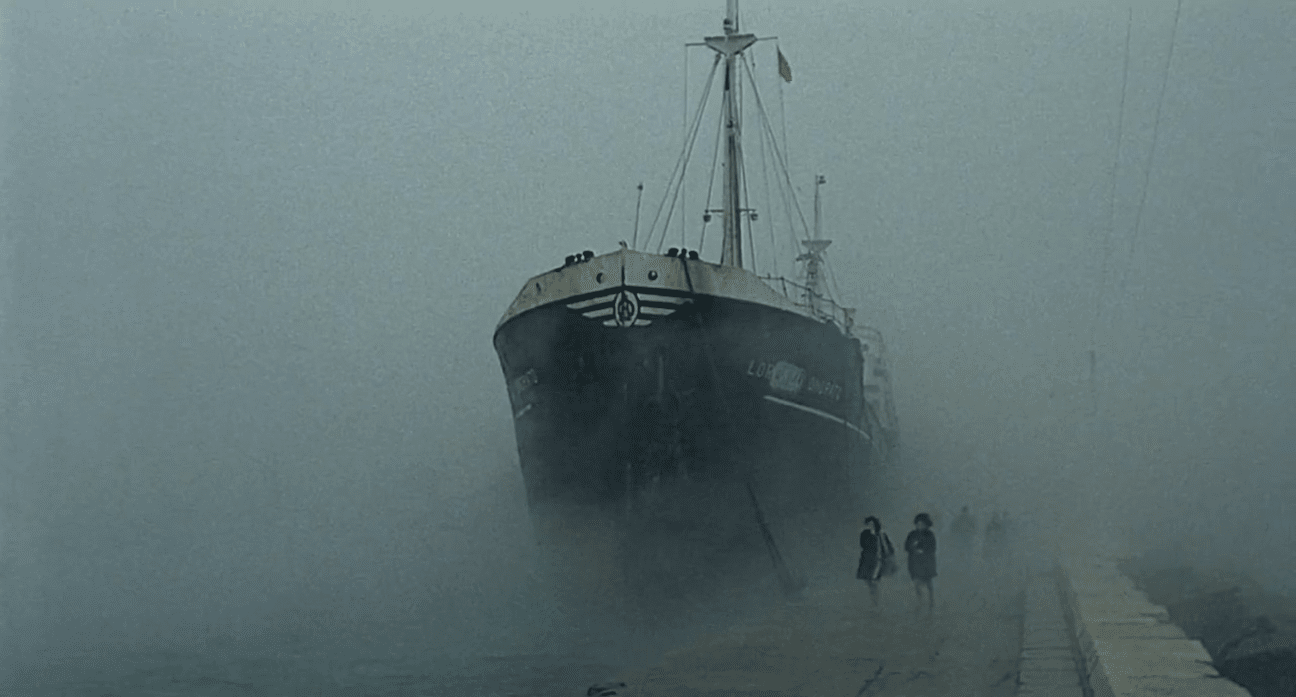

A still from Michelangelo Antonioni, Red Desert (1964)
A filmmaker is a man like any other; and yet his life is not the same.1 Seeing is for us a necessity. For a painter too, the problem is one of seeing: but while for the painter it is a matter of uncovering a static reality or at most a rhythm that can be held in a single image, for a director the problem is to catch a reality which is never static, is always moving toward or away from a moment of crystallization, and to present this movement, this arriving and moving on, as a new perception. It is not sound—words, noises, music. Nor is it a picture—landscape, attitudes, gestures. Rather, it is an indivisible whole that extends over a duration of its own which determines its very being. At this point, the dimension of time comes into play in its most modern conception. It is in this order of intuition that the cinema can acquire a new character, no longer merely figurative. The people around us, the places we visit, the events we witness—it is the spatial and temporal relations these have with each other that have a meaning for us today, and the tension that is formed between them.
This is, I think, a special way of being in contact with reality. And it is also a special reality. To lose this contact, in the sense of losing this way of being in contact, can mean sterility. That is why it is important, for a director even more than for other artists, precisely because of the complexity of the material he has between his hands, to be committed morally in some way. It is almost superfluous to point out that our effort as directors must be just that of bringing the data of our personal experience into accord with that of a more general experience, in the same way as individual time accords mysteriously with that of the cosmos. But even this effort will be sterile if we do not succeed in giving by this means a sincere justification of the choices which life has obliged us to make.
The sky is white; the sea-front deserted; the sea cold and empty; the hotels white and half-shuttered. On one of the white seats of the Promenade des Anglais, the bathing attendant is seated, a black man in a white singlet. It is early. The sun labors to emerge through a fine layer of mist the same as every day. There is nobody on the beach except a single bather floating inert a few yards from the shore. There is nothing to be heard except the sound of the sea, nothing to observe except the rocking of that body. The attendant goes down to the beach and into the bathing station. A girl comes out and walks toward the sea. She is wearing a flesh-colored costume.
The cry is short, sharp, and piercing. A glance is enough to tell that the bather is dead. The pallor of his face, the mouth full of saliva, the jaws stiff as in the act of biting, the few hairs glued to the forehead, the eyes staring not with the fixity of death but with a troubled memory of life. The body is stretched out on the sand with the stomach in the air, the feet apart and pointing outwards. In a few moments, while the attendant attempts artificial respiration, the beach fills up with people.
A boy of ten, pushing forward a little girl of about eight, shoves his way through to watch. “Look,” he says to the girl, “can you see?” “Yes,” she says very quietly. “Can you see the spit on his mouth?” “Yes.” “And the swollen stomach? Do you see? It’s full of water.” The little girl watches as though fascinated in silence. The boy goes on with a kind of sadistic joy. “Now he’s still white but in a few moments he’ll go blue. Look under his eyes; look, it’s starting.” The girl nods in assent but remains silent: her face shows clearly that she is beginning to feel sick. The boy notices this and looks gloating. “You scared?” “No,” the little girl replies in a thin voice. “Yes, you are,” he insists and goes on almost chanting “You’re scared—you’re scared—” After ten minutes or so the police arrive and the beach is cleared. The attendant is the only one who remains with the policeman. Then he too goes off, summoned by a lady with violet hair for her usual lesson of gymnastics.
It was wartime. I was at Nice waiting for a visa to go to Paris to join Marcel Carné with whom I was going to work as an assistant. They were days full of impatience and boredom and of news about a war which stood still on an absurd thing called the Maginot Line. Suppose one had to construct a bit of film based on this event and on this state of mind. I would try first to remove the actual event from the scene and leave only the image described in the first four lines. In that white sea-front, that lonely figure, that silence, there seems to me to be an extraordinary strength of impact. The event here adds nothing: it is superfluous. I remember very well that I was interested when it happened. The dead man acted as a distraction to a state of tension. But the true emptiness, the malaise, the anxiety, the nausea, the atrophy of all normal feelings and desires, the fear, the anger—all these I felt when, coming out of the Negresco Hotel, I found myself in that whiteness, in that nothingness, which took shape around a black point.
The text originally titled “Il fatto e l’immagine,” was published in the Italian journal Cinema nuovo 164, July 1963. First translated into English in Sight & Sound 33 (1), Winter 1963–64.